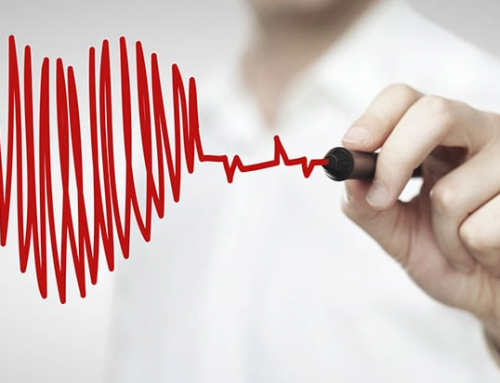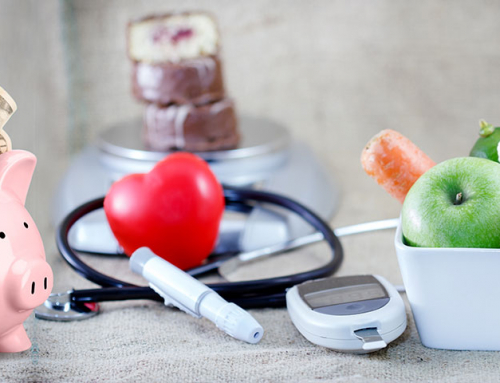Each year as the month of February approaches, we notice red or pink boxes of Valentine’s Day candy lining the stores in the shape of hearts. In conjunction, the American Heart Association has declared February ‘Heart Month’ to help people become more aware of the implications of heart disease.
Heart disease is not just a disease that affects older men; it affects the young and old as well as male or female. According to the U.S. Department of Health and Human Services “heart disease is the leading killer of women in America.” The cause is an increased build up of artery plaque which can ultimately lead to a heart attack or stroke. Let’s cover some of the problems involved in heart disease, how it relates to diabetes and what steps we can take to lower our risks.
-
Hypertension (high blood pressure)
High blood pressure affects more than 50% of men and women over the age of 45. Hypertension is chronic and if not treated, it causes the arteries to become more rigid, so the blood has a difficult time flowing through. The interior lining of all the blood vessels (including the tiny and large ones) are affected, which can increase the incidence of kidney failure, blindness, a heart attack or stroke (the leading cause of death for those with type 2 diabetes is a heart attack or stroke). Many people are experiencing hypertension at a much younger age (similar in type 2 diabetes) due to poor choices and lack of exercise. As with diabetes, hypertension has a family history-genetic component. Psoriasis, a skin disorder, also increases your risk of hypertension. High blood pressure during pregnancy (even if it disappears after childbirth) is considered a risk factor (similar to gestational diabetes during pregnancy, which increase type 2 diabetes in later life). Hypertension often has no symptoms, but may present with blurry vision, headaches or dizziness just like onset symptoms of diabetes. According to the American Heart Association the optimal blood pressure is 120/80 with 130/80 being considered as borderline high. The best idea is to check with your own health care provider since each person has other risk factors involved and together decide what level is good for you.
What to do – Treating high blood pressure requires life style changes including cutting back on sodium to 1200-1500mg a day. The average American eats 4000mg of salt a day. Reduce your saturated fat intake (dietary cholesterol like eggs or shell fish has a much lower affect on blood cholesterol than saturated fat like fatty red meats, whole milk, bacon, butter, poultry skin or processed foods). Include exercising a minimum of 150-180 minutes a week and manage your daily stress with meditation or deep breathing. Purchase a blood pressure monitor for the home and use it. If you have sleep apnea discuss treatment using a CPAP mask with your physician. Drink alcohol moderately with no more than 1 drink a day for women or 2 drinks a day for men under 65. If these measures do not bring down blood pressure your physician will consider medications such as diuretics, ACE inhibitors, ARBs, or beta blockers.
-
High Cholesterol
The most important number in your lipid profile is your LDL value. LDL is the bad cholesterol that forms the plaque inside the arteries and puts you at added risk for heart attack and stroke. Even more important is the LDL particle size; the small dense LDL is much more dangerous than the light, fluffy and large particles. Check with your physician since particle size may require a separate blood test. Things that increase your risk of elevated LDL are: family history, inactivity, high saturated fat diet and low levels of estrogen following menopause. The guideline for a good LDL value is between 70mg/dl – 100mg/dl depending on your current risk factors. Triglycerides are fats made by the body that can also clog up the arteries. When blood sugars are high many times the triglycerides are elevated as well. An acceptable level is under 150mg/dl. Simple sugary foods, processed foods and alcohol have a strong impact on your triglycerides. HDL is the protective or good cholesterol since it can carry excess cholesterol away from the arteries. The higher the better.
What to do – Since there are no symptoms associated with high LDL or triglycerides you should have them checked with a blood test. The scheduled time will be recommended by your physician. Many times exercise can raise HDLs and adopting a new diet plan may reduce LDLs. Consider not smoking. Your physician may suggest a statin medication which will help lower your LDLs or a fibrate medication to help lower triglycerides.
We will continue with heart information in our next February newsletter to keep you up to date with needed terms and how to improve your cardiac health! Enjoy Valentine’s Day!
NOTE: Consult your Doctor first to make sure my recommendations fit your special health needs.






Leave A Comment